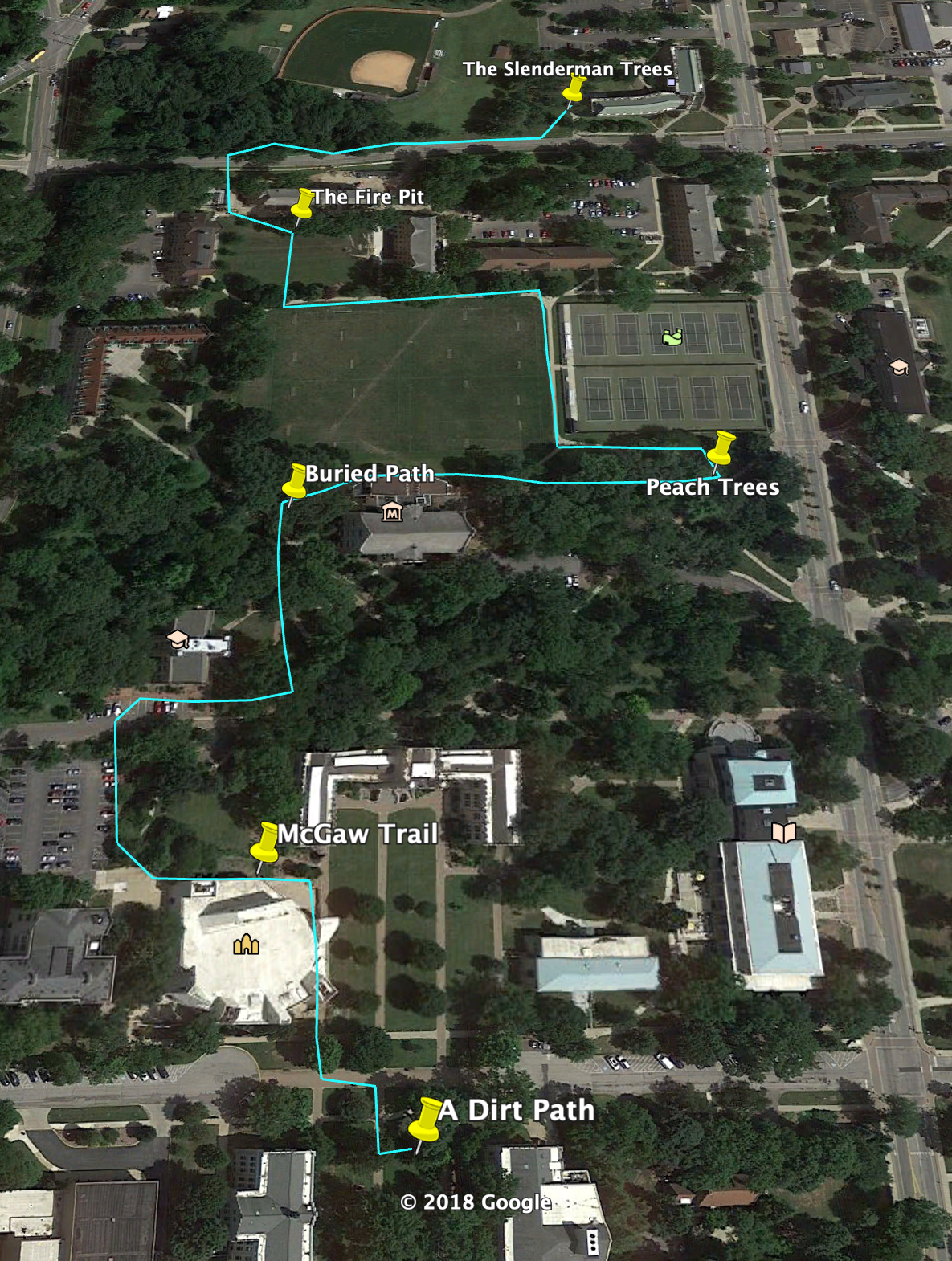Here is where we start, with our first trail through the woods. A well worn path cut by everyone who’s gone before you. If you’re reading this in winter or a really muddy day, I really don’t recommend you actually walk this path. Black ice is a real thing and because of the way the hill funnels water down this strip of dirt can be completely coated in slick ice. Believe me, I’ve fallen more than my fair share on this supposed short cut.
There are probably some of you who are thinking that you should never walk this path, because walking here is stamping out any new growth. But in reality the ground has been so packed down over the years by other students that it won’t grow any grass anyway. Not unless Grounds comes in, hoes up the dirt, and quarantines the area while the grass fills in. So if you feel bad about it, know that if Grounds wants it to fill in they’re going to block the whole area off for it to recover. But in the meantime, here it is. Walk it if you must.
This path is not some freak act of nature. People wore this path down in their efforts to shortcut the hard angled sidewalks of the main quad. There’s a school of thought about sidewalks that you wait and see where people walk and put them down there. The reasoning being that people will walk where they want to walk and a paved path will protect them from falling on slippery mud and ice.
Now while Wooster hasn’t put down new paths for a while (save for restoring some of the ones already there), Wooster did follow this policy at one point. The reason the campus doesn’t anymore is because they’re worried that this kind of “place a trail where people walk” mentality will become a slippery slope. If you put one path down, students will try and shortcut that one and before you know it you’ve bricked in the whole quad. They want to keep the nice clean grassy quad where they take all their admissions photos. And I kind of agree with this mentality. It’s the reason I chose Wooster over the colleges much closer to me. Those colleges were big and bricked in from end to end in a drab 1970’s no-nonsense industrial style. I didn’t want to look out on a cement quad everyday, so I picked Wooster.
In Thoreau’s final chapter, “Conclusion,” he talks about the path he made living at Walden:
“It is true, I fear that others may have fallen into it, and so helped to keep it open. The surface of the earth is soft and impressible by the feet of men; and so with the paths which the mind travels. How worn and dusty, then, must be the highways of the world, how deep the ruts of tradition and conformity! I did not wish to take a cabin passage, but rather to go before the mast and on the deck of the world, for there I could best see the moonlight amid the mountains.”
Thoreau sees the pathway (which, yes, has likely remained open by tourists visiting Walden and has helped erode away at the foundations of the pond) as a mindset. For him it is representative of people’s willingness to follow past examples and take the easy route or the conformative route. He is saying here that when we stay in our paved cities and tread the same pathways everyday we become blind to other opportunities.
So what of this path? Perhaps this path is a sign that the Wooster students are, in some little way, going outside of the paths set before them, and finding a more efficient route to their destination. Or perhaps the hard packed, untenable soil is evidence of the opposite. Students every year see this pathway already cut through the grass and think with a shrug “well, if everyone else is doing it.” Perhaps we are forming a new rut “of tradition and conformity.” Wooster may as well just path this path because in essence it is already created.
The way I see it, you can take the short cut through the grass or not, but don’t ignore it. This path is a reminder that where we go to today, others might follow tomorrow. So we should be mindful of how we’re interacting with the world around us because while our footsteps make no difference to the grass beneath our feet, a hundred footsteps do.
So as you walk this trail, which I make knowing that I am potentially creating another rut in our campus ground, feel free to wander and explore. Walk off the path, touch the trees, lay in the grass (it is all a little bit manufactured anyway), but be mindful not to disturb anything unnecessarily. Not just because the world takes a long time to grow what you can destroy in minutes, but because your actions give credence to other people’s.
